We’ve always got great new titles available at the OISE Library! Check out these and other books about diverse and inclusive classrooms:
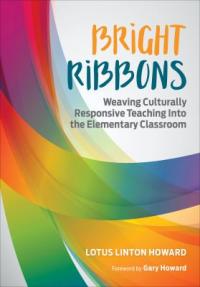 Bright Ribbons: Weaving Culturally Responsive Teaching Into the Elementary Classroom, by Lotus Linton Howard
Bright Ribbons: Weaving Culturally Responsive Teaching Into the Elementary Classroom, by Lotus Linton Howard
Weaving a tapestry with coloured ribbons is the theme running through this book about building strong, multicultural classrooms. Each chapter represents a different ribbon and addresses a specific aspect of culturally responsive teaching, such as “students are affirmed in their cultural connections”and “instructional changes are made of accommodate differences.” In addition to providing readers with foundational theory relating to culturally responsive teaching, each chapter contains a wealth of practical tips, sample techniques, questions for reflection, lists of available resources such as books and websites, and model lessons that flag the common ways in which teachers may trip up.
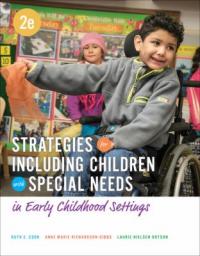 Strategies for Including Children with Special Needs in Early Childhood Settings, by Ruth E. Cook, Anne Marie Richardson-Gibbs, and Laurie Nielsen Dotson
Strategies for Including Children with Special Needs in Early Childhood Settings, by Ruth E. Cook, Anne Marie Richardson-Gibbs, and Laurie Nielsen Dotson
With the increasing inclusion of children with special needs in the mainstream classroom, the responsibility for meeting these children’s needs no longer belongs only to special educators and therapists. Teachers in mainstream classrooms must also develop strategies and skills to support these children, and this book is intended to be a practical, hands-on guide to help teachers accomplish this. In addition to providing strategies for specific special needs, such as Down syndrome, autism, and hearing impairments, this book includes chapters about specific contexts, including arrivals and departures, mealtimes, and outside activities. Also included are suggestions about how the physical space of the classroom can be adapted to accommodate children with special needs and advice for communicating with families and collaborating with specialists such as speech-language pathologists and occupational therapists.
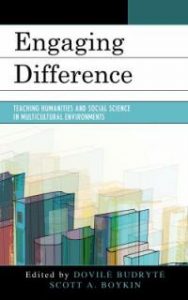 Engaging Difference: Teaching Humanities and Social Science in Multicultural Environments, edited by Dovilė Budrytė and Scott A. Boykin
Engaging Difference: Teaching Humanities and Social Science in Multicultural Environments, edited by Dovilė Budrytė and Scott A. Boykin
Multicultural education and intercultural competence has become an essential part of teachers’ jobs, yet this remains a challenging aspect of teaching as well. Coming from a wide array of disciplines and perspectives, the authors in this edited volume have all taught in diverse classrooms and have developed strategies to engage their students. The topics of these chapters are varied, including intersectionality, civil rights, political science, foreign language teaching social media, decolonization, immigration, and privilege. Although these chapters cover a variety of topics, an overall theme nonetheless emerges, concluding that “effective teaching in diverse classrooms attempts to recognize the individuality of every person and express respect for complexity.”
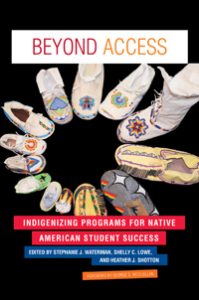 Beyond Access: Indigenizing Programs for Native American Student Success, edited by Stephanie J. Waterman, Shelly C. Lowe, and Heather J. Shotton
Beyond Access: Indigenizing Programs for Native American Student Success, edited by Stephanie J. Waterman, Shelly C. Lowe, and Heather J. Shotton
Written by Indigenous scholars, this book responds to the continued difficulties faced by Indigenous students in accessing post-secondary education. With personal stories from current Indigenous students interspersed every few chapters, this book explores Indigenized college access programs with an emphasis on programs developed by and not just for Indigenous students, examines the ways in which mainstream college programs fail to engage Indigenous students, and discusses ways of reconciling Indigenous values and culture with the dominant school system. individual chapters touch upon a variety of topics, such as college applications, Tribal Colleges and Universities, financial aid, effective recruitment and retention strategies, and leadership programs.
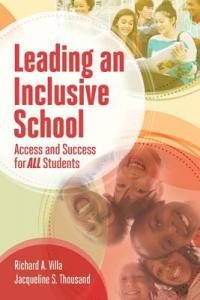 Leading an Inclusive School: Access and Success for ALL Students, by Richard A. Villa and Jacqueline S. Thousand
Leading an Inclusive School: Access and Success for ALL Students, by Richard A. Villa and Jacqueline S. Thousand
For teachers and administrators unfamiliar with the topic of inclusion, this book is an excellent introductory text with clear explanations of concepts and information about the history of inclusive education, curricular and instructional practices for implementation, and organizations that support inclusion. Not only does this book discuss the “what” and “why” of inclusive education, but provides an overview of the “how,” discussing strategies for implementing inclusive education such as co-teaching and differentiated instruction. The final section of this book is an FAQ, addressing common questions and concerns about inclusive education.
